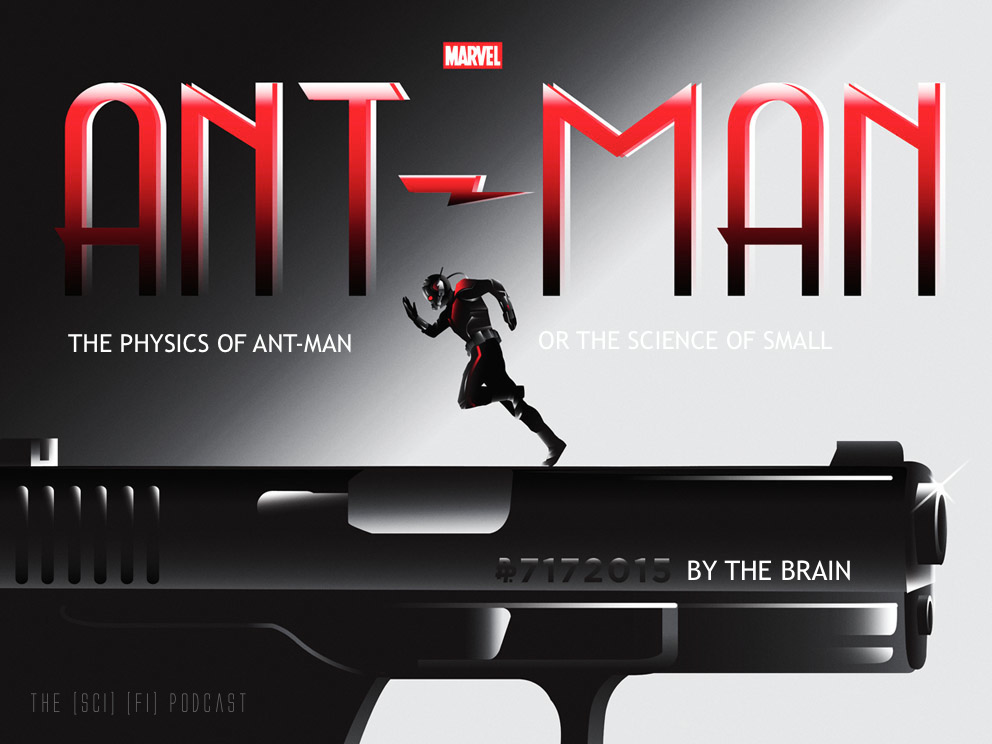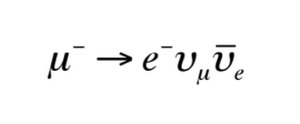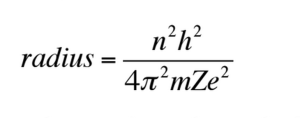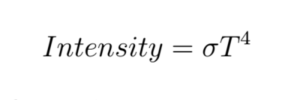 Artwork by the very talented Rodolfo Reyes via the Poster Posse
Artwork by the very talented Rodolfo Reyes via the Poster Posse
1 THE SCIENCE OF SMALL
Shrinking ourselves down to the size of an ant has long been a popular theme in science fiction. Movies such as Honey I Shrunk the Kids, Innerspace, Fantastic Voyage, The Incredible Shrinking Woman, and many more have depicted shrinking in various forms or another, all culminating in the same result; I was big, now I’m small. But how realistic is this? Have these movies portrayed the science of small correctly, or are there scientific issues far beyond what is portrayed on the silver screen?
To address these questions and more, we will take a look at the 2015 release of Marvel’s Ant-Man and the modern physical laws that come into play in the movie.
Ant-Man’s primary premise for shrinking is quite sound on the surface; find a way to bring your atoms closer together and your overall structure will decrease while remaining structurally sound. Imagine I make a giant cube out of inflated balloons, like the size of a building. Then, all at once, I let out two-thirds of the air inside of those balloons, decreasing their radius. Now, the cube is much smaller than the giant cube I once had (roughly 29% of the original size if you do the math).
This is the mechanism they use to shrink one Mr. Scott Lange to the size of an ant. But how do they do it? How do they deflate his atom-balloons to bring him down to the size of an ant? Well, there are two popular theories taken straight from the pages of the original comic books of the 1950’s and 60’s. While they seem to provide no deep scientific insight in the comics, we have enough knowledge of particle physics that it might just be possible to cobble together a realistic scientific process from the information given.
2 THEORY 1: THE PYM PARTICLE
By far, the Pym Particle is the most widely used mechanism in the comic book, even making it into the movie, as the inventor Hank Pym’s greatest achievement. It is the prime mechanism that nearly gets our protagonist washed down the bathtub drain.
So what is this particle made of?
Dr. Pym spends the entire movie extolling on the dangers of the particle, and how he will never let it’s secret be known, but I bet some basic physical principles can help us figure it out. In the Pym Particle theory the method by which we shrink our hero down can be explained with something known as the “Conservation of Angular Momentum.”
This foundational law of physics basically states that any particle with an angular momentum (like an electron buzzing around a nucleus in a cloud) must always be the product of two quantities, the moment of inertia of the atom as a whole multiplied by the angular velocity of the electron buzzing around its orbital.
What does this have to do with making Scott shrink?
Think of it this way, if we can find a way to make the electrons heavier, (current mass of .511 MeV), then the conservation law says that the electron will have to move in closer to the nucleus to conserve its angular momentum.
Simple analogy; a skinny track runner can easily run at a constant velocity around a large track, while a heavier set fellow who has more weight to carry will need a much smaller track around the same course in order to have the same constant velocity. Terrible analogy, I know, but the idea is similar, and I’m a scientist not a storyteller.
So, how do we make our electrons gain weight without altering any other properties that they have? Well, in the world of particle physics there is a lovely little lepton that fits our profile exactly: The Muon.
Muons are in the same family as electrons (leptons), they have the same charge (-1), the same spin value (½), and most importantly they are roughly 200 times the mass of an electron!
But can we change all of our electrons into muons? Is that even possible?
Yes! Well…maybe. In most cases you will never see an electron turn into a muon, it’s just not very likely. This is because the electron has so much less mass than the muon that it would take an enormous amount of energy to add the constituent pieces needed to the electron and make them stick.
However, muons decay all of the time. In fact we count on that process in particle physics all day long! The study of muon decay has shown us that a big fat muon will break down into its constituent parts after only ~2.2 microseconds.
So what’s it made of?
Well, there are a few processes, and a “virtual” particle involved, but the end result is always the same; a muon decays into an electron-antineutrino, a muon-neutrino, and an electron;
 There it is! Now (hypothetically) we can run the process in reverse and force an electron to potentially become a muon, all we have to do is stick a couple of neutrinos to it! Easy, right? Right?
There it is! Now (hypothetically) we can run the process in reverse and force an electron to potentially become a muon, all we have to do is stick a couple of neutrinos to it! Easy, right? Right?
Enter the Pym Particle.
Well here’s the kicker, a neutrino and an antineutrino are not friends. A neutrino is a matter particle, while an antineutrino is made up of antimatter. The moment they touch, BAM! All of their mass becomes energy in the form of photons (light), and there’s nothing left to stick to our electron and make it heavier.
So, here is where comic books and Hollywood take over; Hank Pym has somehow found a way to bind a muon-neutrino to an electron-antineutrino so that they do not annihilate, THAT my friends is the Pym Particle. The suit bombards your body with “Pyms” so heavily that your electrons are forced to become muons, and you shrink. This, I assume, is why Ant-Man is fully encased in his suit. Somehow the suit contains the bombardment so that nothing outside of it is hit with Pym particles and shrunk right along with him (or her for the Wasp fans out there).
But wait, didn’t I just say that muons only last an average of 2.2 microseconds? What gives? Well, either the Pym bombardment is constant while Ant-Man is ant-sized, and by cutting off the bombardment he grows immediately (which explains the severe mental decay of its users over time discussed in the film), or there is something else at work. Something like…
3 THEORY 2: THE PYM FIELD
This theory is a bit of an odd duck. It has the potential to stand on it’s own, but it also fits with theory 1 well enough to fill in some of the gaps. Here’s how. The mathematics that guides our understanding of atomic size and spacing is full of a common scientific tool: constants. A constant in science is a value that is set in stone, and helps us to define the properties of the space and matter that we are dealing with. To solve for the radius of an atom in particle physics, (it’s simplest form at least), we use the Bohr radius equation:
 Now, don’t be afraid, there’s not going to be a quiz at the end of this. But, I want you to notice the values n, h, π , Z, and e. For any given electron, in any given atom, these values are constant; they don’t change. In fact e, h, and π will never change, regardless of the atom in question.
Now, don’t be afraid, there’s not going to be a quiz at the end of this. But, I want you to notice the values n, h, π , Z, and e. For any given electron, in any given atom, these values are constant; they don’t change. In fact e, h, and π will never change, regardless of the atom in question.
So what does this nightmarish math have to do with the awesomeness of Ant-Man?
Well, in several early Ant-Man comics there was mention of the Pym Field. In physics a “field” is something that permeates everything around it. Sometimes it has a source, like a magnetic field from a magnet. Sometimes it has no known source, such as the long postulated and recently discovered Higgs field. And sometimes George Lucas uses the idea to make a little green guy lift an X-wing out of a swamp.
So what is this field and what does it do?
The Pym Field theory, as far as I can tell from scouring my uber-nerd forums online, says that by creating Pym field inside the suit the values of the universal constants involved in an atoms radius change. They change in such a way that the radius in the scary equation above is now much smaller than before.
This type of mechanism has the ability to alter the foundations of time and space in a localized area in order to ant-ify anything it penetrates. A very creative and interesting idea, and unfortunately not at all possible. Like Superman turning back time only on the earth, this theory, while genuinely interesting to contemplate, does not fit well into the reality of the physics of the universe we live in.
4 THEORY 3: PYM MEETS HIGGS
BUT! (there’s always a but) What if the Pym Field is not quite what we think? Perhaps it is similar in effect to the current Higgs field?
Now, because I don’t want to mislead anyone, we are still in an out-of-bounds territory of science (well the Higgs stuff is real, check it out at your local library!). However, with the recent discovery of the Higgs boson perhaps we can explain the two theories together in an ultimate mashup!
The Higgs boson is a product of the existence of the Higgs field, a field that penetrates all of space and imparts mass to some types of particles. I propose that the Pym Field/Particle acts in the same fashion. In this new theory Ant-Man’s suit is capable of producing a Pym Field of such density and high energy inside the suit that resulting Pym Particles “pop” out of it and change your electrons into muons!
Mic drop, turn, walk off stage.
Allow me to expound. The mysterious red fluid created by Hank Pym is actually used by the suit to generate a Pym Field inside of it. This field is capable of changing the constants of our universe in such a way as to allow our hero to decrease in size. Simultaneously, the field density is high enough to generate Pym Particles, a muon-neutrino paired with an electronantineutrino, and compound the effect until a preset sized is achieved. At this point the field density is stabilized and Ant-Man remains a specific size that is preset in his regulator (referred to in the film).
This theory would actually account for the harrowing disaster that befalls our hero in the final moments of the film (no spoilers), as theories 1 and 2 on their own don’t cover enough of the bases to make it viable.
Personally, I am a fan of theory 1, but there are enough holes in the storyline that this new theory I have created compensates for what each of the others lack in their own rights.
5 THE PROBLEMS ASSOCIATED WITH BEING SMALL
Where do I begin?! There are so many issues once you are an ant-sized person that I feel I can only list a few of the most valid points.
5.1 Mass
If Scott Lang’s atoms are merely shrinking in radius that would mean that his mass remains constant. I assume he weighs somewhere in the neighborhood of 165 lbs. By using the method described in theory 1, when he shrinks he would maintain that same mass, he would be an ant that weighed 165 lbs!
How exactly does our hero run across the barrel of a gun, stand on his buddy’s shoulder, jump on an Avengers back, or stand on a toy train track? All while being a pebble with a specific gravity high enough to punch right though all of these things if he wanted to
One of the primary reasons you don’t fall through the floors of you home, or punch through your friends shoulder when you see them, is that the force you are delivering is spread out over a large area. This decreases the force delivered at a small point, preventing your palm from going right through your friends palm when you high five.
Ant-Man has severely decreased his cross-sectional area, yet he is delivering the same force across this tiny new area! Unfortunately there is widely varying data on how much force it would take to puncture human skin, and rightly so as there are a number of factors to be taken into account. But, imagine something the size of a BB putting 165 lbs. of pressure on your shoulder. It can’t be pleasant.
WAIT A MINUTE…
We increased the mass of his electrons in order to shrink him in the first place! Now, electrons only make up a fraction of your total mass, but what about electrons that are 200 times more massive than before (muons, remember)?
The average 165 pound human has approximately 2 • 1e+28 electrons in their body. Taking the mass of an electron in lbs. to be about 20 • 1e-31 lbs. that means that about 0.04 lbs. of Scott’s mass is electrons. Not so scary. That means that by turning them into muons Scot has gone from 165 lbs. to roughly 173 lbs., not a significant enough difference to worry about.
5.2 Density of Air
Fluid density is a rarely considered problem that could mean instant death for tiny humans. Air is a fluid, and no I don’t mean liquid. I mean that it is “A continuous, amorphous substance whose molecules move freely past one another and that has the tendency to assume the shape of its container; a liquid or gas.” (thanks google).
At our current size the fluid density of air is quite easy to overcome. We can stand, sit, walk, run, with relative ease in this fluid compared to other types of fluids, such as water.
But, when we shrink down to the size of an ant the fluid effect becomes far more oppressive than at full size. An ant feels the air as having a density somewhere between how we experience air versus water.
Impressive.
Imagine if the humidity level of our atmosphere were so high that it was comprised of 50% water. How would you move? Your strength would need to dramatically increase in order to affect any sort of motion on your part. You would need more strength to stand, to walk, and to run. The weight of the air would be much higher as well, pressing down on you.
More importantly you would struggle to breathe.
One assumed benefit of the ant suit is the breathing apparatus on the front of the helmet. By shrinking down your lung capacity has greatly decreased, reducing the amount of oxygen getting to your blood. Ant-Man is supposed to have the same physical strength and abilities of a full size 165 lb. man, and therefore must burn the same amount of energy as a full sized man, and require the same intake of energy as a full size man. By reducing his lung capacity he would suffocate almost instantly when ant size. The breathing apparatus must somehow compensate for the lack of oxygen by delivering a higher concentration of O2 to keep him conscious.
What else does this apparatus do?
Well, consider the fact that the alveoli in our lungs is designed to deal with a molecule of a very specific size and shape. When Scott shrinks, his alveoli shrink. His lungs are no longer capable of processing regular size air molecules.
The breather must also expose any incoming air to the Pym mechanism so that he can breath what his body would see as “normal size” air. I can accept this as plausible, and I just hope we never get a scene where he takes the helmet off when he is tiny. It would just ruin it for me.
5.3 Sound
Sound waves are a funny thing (if you don’t have a background in acoustical physics). Fortunately, they can be described in very easy to understand ways.
Take our hearing for example; cilia inside of our ears are grown at very specific lengths that allow them to be triggered when a sound wave of a specific frequency hits them. You have cilia for almost all of the frequencies you will ever need to hear packed deep inside of your ears.
Think about the last time you were at a concert, or a gun range, or off lighting firecrackers in the street. Afterward, your ears may have had a “ringing” sound in them. That is an indicator that you have damaged one or more of your cilia. The frequency you are hearing in your ear is the frequency that the specific cilia you’ve damaged was attenuated to hear.
The lengths of these cilia are very important, the longer the cilia the lower the frequency it responds to, the shorter it is the higher the frequency it responds to.
So, let’s talk Ant-Man.
When Ant-Man shrinks, so do his cilia. Since the frequency of sound is a physical property of the fluid medium (air), which should mean that his hearing drastically changes. He is now capable of hearing in a much higher frequency range. His cilia are so short that his lowest bounds of hearing have gone from about 20 Hz to roughly 340 Hz.
“So what?” I can hear you all mumbling to yourselves.
Well, the average male human voice is in the range of 200 – 250 Hz, far below Ant-Man’s new hearing range. His helmet therefore must somehow attenuate incoming voice and radio signals into a range that he is capable of perceiving comfortably.
So his cilia shrink, does that mean his vocal chords shrink?
Yup! Ever wonder why little kids have a higher voice than adults? One of the reasons is the length of their vocal chords. Strings of a specific length can only be made to vibrate at certain frequencies, and the shorter the string (or vocal chord in this case) the higher the frequency generated.
Ant-Man should have a high pitched voice somewhere in the range of 500 Hz, your typical young boy. So while he doesn’t have to sound like Mickey Mouse, he would most likely sound like the 7-year old version of himself to outside listeners.
Not only that, but what about the density of air that we just talked about? The air would be so dense, and his lung capacity so small, that he would have no projection to his voice! He could shout his loudest and no one would be able to hear it. I can only assume that the helmet he wears, while providing him with a means to breath, also provides him with attenuated audio and voice capabilities to compensate for all of this mess.
I mean, the great Dr. Pym surely would have taken all of this into account, right? A good Physicist always does.
5.4 White Hot Heat
As I mentioned above, the Ant-Man requires and expends the same amount of energy as a full-grown adult male. One commonly ignored observation about human beings is that we emit light in the form of infra-red radiation. Using basic thermodynamics one can calculate that the typical male, 5’10’, 165lbs., gives off approximately 900W of infra-red light. Intense! (Pun intended).
In fact, why don’t we follow the equation used for the calculation:
 where sigma, (σ), is called the Stefan-Boltzmann constant. Wrapped up in the calculation for that constant is the surface area of the body that is radiating the power.
where sigma, (σ), is called the Stefan-Boltzmann constant. Wrapped up in the calculation for that constant is the surface area of the body that is radiating the power.
From here we can find the surface area of any warm body and calculate the total power that comes out of it. For example, if my normal skin temperature is around 85◦F, (about 303 Kelvin, a Physicist always uses Kelvin), then all that is left to do is multiply that temperature by itself four times, then multiply it by the numerical value for sigma, (5.67 × 10−8Wm−2K−4), and finally multiply that by the surface area of my body in meters. Personally I put out ≈ 1050W, but I’m a tall guy.
Here I go again, torturing the readers with math. Here’s why!
Scott Lang is your average sized athletic adult. He is probably a 900W IR light bulb with roughly two square meters of surface area. Because he can fight with his full-grown strength, when he shrinks down his ant-like size his metabolism will continue to output those 900W. Only now, instead of being spread out over a large area, the heat will be concentrated over an area about a millionth the size!
This is roughly the surface area of a light bulb filament, a 900W light bulb filament to be precise. Without dragging more mathematics into the discussion we can safely assume Ant-Man should be a blinding, white-hot point, burning his way through everything he touches, even the suit!
6 SUMMARY
While Ant-Man does have several grossly-overlooked principles of science woven into it’s premise, it provides some very stimulating ideas in the areas of modern, classical, and atomic physics, overall. Plus, it’s one hell of a fun movie.
—Brain
Producer’s note: We here at The SciFi Podcast are pleased to present the scientific musings of one of the smartest guys we know. Introducing: The Brain! We’ve all been friends with Brain (aka Brian Patchett) for decades, but mostly in the context of mohawks and guitars (it’s funny what starting a science fiction podcast will bring out of those you thought you knew). Although Brain will make his official TSFP debut on next week’s discussion of Terminator Genysis (2015) and the topic of time travel, we were very happy to post this ingenious Brain Blog, to give those of you who don’t already know him from the comment boards a little taste of what’s to come. You can download Brain’s original article: here. And, of course, we’d be thrilled to continue posting Brain’s “The Physics of …” blogs whenever he’s willing to share them with us.

Oh man, this is so cool. I can’t wait for later today when people get the Time Travel episode.
Pingback: THE SCI-FI PODCAST EP 8: Terminator Genysis (2015) and Time Travel | The SciFi Podcast
Pingback: THE SCI-FI PODCAST EP 9: Mad Max: Fury Road (2015) – It’s a Mad, Mad, Mad, Mad Max World | The SciFi Podcast
In all those centuries of experimenting with insects as weapons, nobody has developed the technology to create a tiny, insect-size soldier with superhuman strength. Still, Lockwood said that Ant-Man does build its superhero fantasy upon some small grains of scientific truth.